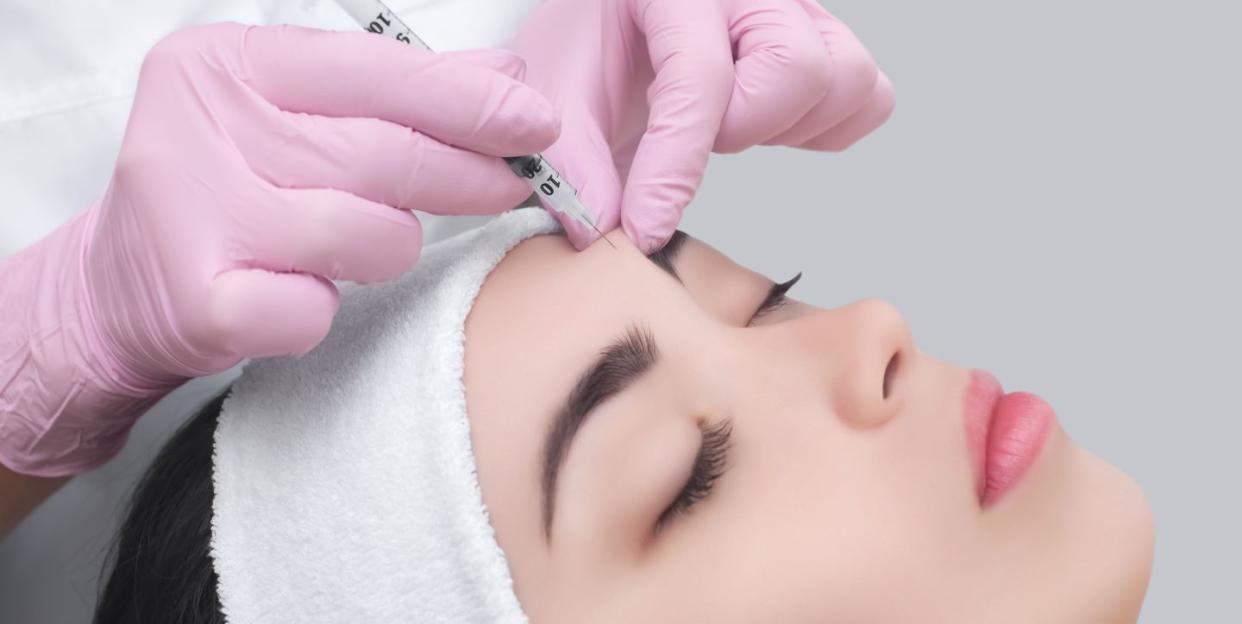Should You Get Forehead Botox? Here's What You Need to Know First

Thanks to stubborn horizontal lines and expression wrinkles, the forehead is a common place to receive Botox injections. But when it comes to the popular wrinkle smoother, there are a lot of rumors, misconceptions, and misleading ideas out there—making it all the more important to get informed before you're staring down the length of a needle. Here's everything you need to know about Botox injections for your forehead.
Botox is short for Botulinum Toxin Type A. It was approved in 2002 for cosmetic use by the U.S. Food and Drug Administration (FDA) as a safe and temporary solution for smoothing wrinkles. (Yes, it’s derived from the same neurotoxin known for causing botulism, an illness that paralyzes muscles and can be fatal).
Despite the botulism association, Botox skyrocketed in popularity and continues to be the most popular non-surgical solution for combating wrinkles, as well as a treatment for chronic migraines and excessive sweating.
After the injections, you'll notice your muscles slowly freeze up in a day or two with the full results appearing after a week. The line-smoothing effects of Botox typically last three to four months before gradually wearing off, according to Dr. Dendy Engelman, a board-certified dermatologist and Mohs surgeon at the Manhattan Dermatology and Cosmetic Surgery. If you love the results of your Botox, there's only one thing that can truly extend its appearance: getting injections again and again.
“There aren’t any proven treatments that can extend the effects of Botox,” explains Engelman. Still, she says, “There are things one can do to complement the treatment so you’re not offsetting the results. That means taking care of yourself, wearing sunscreen, using antioxidants, and overall wellness.”
Unfortunately, due to the muscle paralysis caused by the injections, if you aren’t happy with the results of your Botox there isn’t much that can be done to make it wear off faster. “Unlike HA [hyaluronic acid] filler, we don’t have an enzyme to ‘melt’ the filler right away,” explains Dr. Engelman. “However, the results of Botox are only temporary.”
The short answer: It varies by location and practice. The number of injections needed also varies from person to person, which can alter the final price. According to Dr. Engelman, you can expect to pay anywhere in the $350-$500 range for Botox injections covering your forehead.
As with any drug or injectable treatment, Botox has its risks. In 2009, the FDA added a safety warning stating Botox "may spread from the area of injection to produce symptoms of botulism," including muscle weakness and difficulty breathing, which can occur hours or weeks after an injection.
However, most of the side effects are associated with the injection process itself, says Engelman. “Bleeding, bruising, pain, swelling. Temporary headaches can also occur and if improperly injected, brow ptosis (drooping) can occur," she says. The needle will leave tiny red spots that look like bug bites that usually disappear in the hours after your appointment.
To minimize risks, seek a board-certified dermatologist or plastic surgeon who specializes in cosmetic injectables. “It’s important for patients or those interested in receiving a treatment that they go to a licensed and trained physician with experience,” Engelman stresses.
You'll also want to avoid intense exercise like hot or aerial yoga for a day or two after the treatment (we're serious). This will minimize the risk of the Botox migrating from the site of injection before it's had a chance to settle.
You Might Also Like

